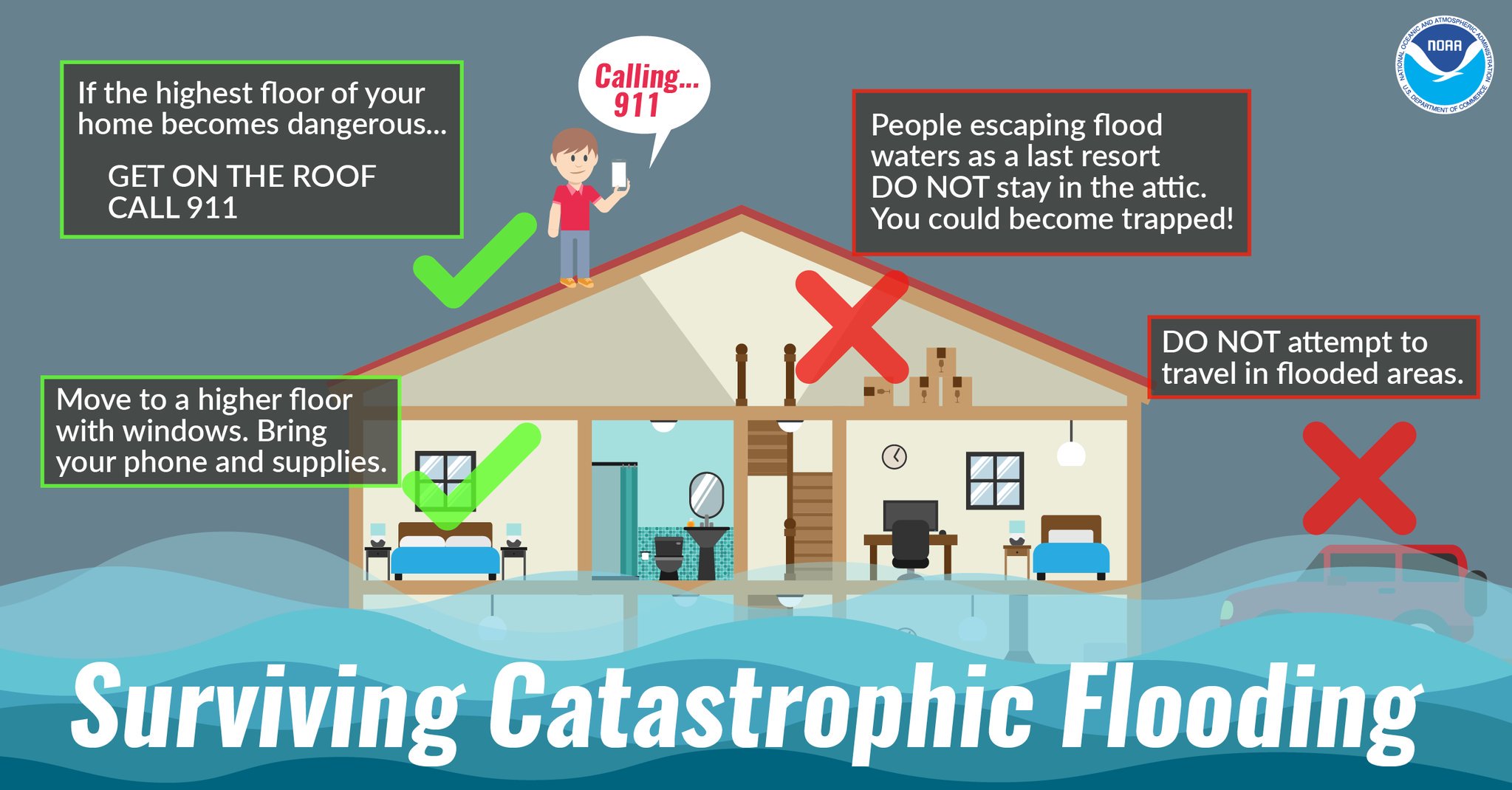Navigating Flood Alerts: Staying Safe During Flood Events

Table of Contents
Understanding Flood Alerts and Warnings
Knowing the difference between flood watches, warnings, and advisories is paramount. These alerts represent different levels of urgency and require varying responses. Misunderstanding these alerts can have serious consequences.
-
Flood Watch: A flood watch means that conditions are favorable for flooding to occur. This is the time to prepare. Review your flood preparedness plan, gather your emergency kit, and monitor weather reports closely. Pay attention to local news channels for potential updates on the evolving situation. This is not a time to panic, but rather to proactively prepare for the potential of flooding.
-
Flood Warning: A flood warning signifies that flooding is occurring or is imminent. Immediate action is required. This is when your preparedness plan needs to be put into action. Evacuate if instructed, move valuables to higher ground, and stay informed about the evolving situation via official sources. Every minute counts during a flood warning.
-
Flood Advisory: A flood advisory indicates that minor flooding is occurring or is likely. While the risk is lower than with a warning, it still requires caution. Stay alert to potential hazards, avoid flooded areas, and continue to monitor weather reports.
Different regions utilize various alert systems. Familiarize yourself with the specific methods used in your area, which may include weather apps like AccuWeather or The Weather Channel, NOAA (National Oceanic and Atmospheric Administration) alerts via email or text message, and local news broadcasts.
Creating a Flood Preparedness Plan
Proactive planning is the cornerstone of flood safety. Don't wait for a flood warning; prepare beforehand. A well-defined plan can significantly reduce the impact of a flood event.
-
Identify Flood Risks: Assess your property's vulnerability to flooding. Are you in a flood plain? Are there drainage issues nearby? Understanding your risks allows for targeted preparedness.
-
Develop an Evacuation Plan: Identify multiple escape routes from your home, accounting for potential road closures. Designate a meeting point for your family in case you become separated. Practice your evacuation plan so that everyone knows what to do.
-
Assemble an Emergency Kit: This kit should include essential supplies like food, water (one gallon per person per day for several days), medications, first-aid supplies, flashlights, batteries, important documents (identification, insurance policies), and a portable radio. Consider the specific needs of your family members, including infants, elderly individuals, or pets.
-
Secure Valuables: Identify and move important documents and irreplaceable valuables to a higher, safer location. Elevate electronics and other sensitive items to prevent water damage.
-
Communication Plan: Establish a communication plan with family and friends, identifying out-of-area contacts who can act as a central point of contact if local communication networks fail.
Safe Actions During a Flood Event
Floodwaters are incredibly dangerous. They conceal hazards like strong currents, hidden debris, and contaminated water, posing significant risks.
-
Obey Evacuation Orders: Never underestimate the power of floodwaters. Evacuate immediately when instructed by authorities. Do not delay; your life is at stake.
-
Avoid Flooded Areas: Never drive or walk through flooded areas. The depth of water is often deceptive, and the current can easily sweep you away. Even a small amount of flowing water can quickly become life-threatening.
-
Turn Off Utilities: If instructed by authorities, turn off gas, electricity, and water to prevent further damage and hazards.
-
Move Valuables to Higher Ground: If evacuation is not immediately possible, move valuable items and electronics to higher floors or areas of your home.
-
Seek Higher Ground: If you become trapped by rising floodwaters, seek the highest ground possible. Try to climb onto a sturdy structure or an elevated area, and call emergency services.
-
Monitor Conditions Continuously: Stay informed about flood levels and weather updates through official sources like the National Weather Service and local news.
Post-flood, carefully check for structural damage, report any damage to the appropriate authorities, and undertake cleanup safely, using protective gear and being mindful of potential contamination.
Resources and Further Information
Staying informed is crucial. Utilize these resources:
- National Weather Service (NWS): [Insert NWS website link here]
- Federal Emergency Management Agency (FEMA): [Insert FEMA website link here]
- Your Local Emergency Management Agency: Contact your local authorities for specific information and resources for your region.
Sign up for local alert systems to receive timely flood warnings and advisories directly to your phone or email.
Conclusion
Understanding and responding effectively to flood alerts is essential for protecting yourself and your family. By creating a comprehensive flood preparedness plan and staying informed about flood alerts in your area, you can significantly reduce the risks associated with flooding. Stay safe by understanding flood alerts. Prepare for flood events by creating a plan that addresses all potential scenarios. Don't be caught off guard; learn how to navigate flood alerts today.

Featured Posts
-
 M6 Closed Van Overturn Leads To Hours Of Congestion
May 25, 2025
M6 Closed Van Overturn Leads To Hours Of Congestion
May 25, 2025 -
 Bbcs Eldorado Why A Broadcasting Legends Involvement Led To Its Demise
May 25, 2025
Bbcs Eldorado Why A Broadcasting Legends Involvement Led To Its Demise
May 25, 2025 -
 Ces Unveiled Europe 2024 Nouveautes Et Technologies De Pointe A Amsterdam
May 25, 2025
Ces Unveiled Europe 2024 Nouveautes Et Technologies De Pointe A Amsterdam
May 25, 2025 -
 The Saint Itv 4 Your Complete Tv Guide
May 25, 2025
The Saint Itv 4 Your Complete Tv Guide
May 25, 2025 -
 Ealas Paris Grand Slam Debut A Look Ahead
May 25, 2025
Ealas Paris Grand Slam Debut A Look Ahead
May 25, 2025
